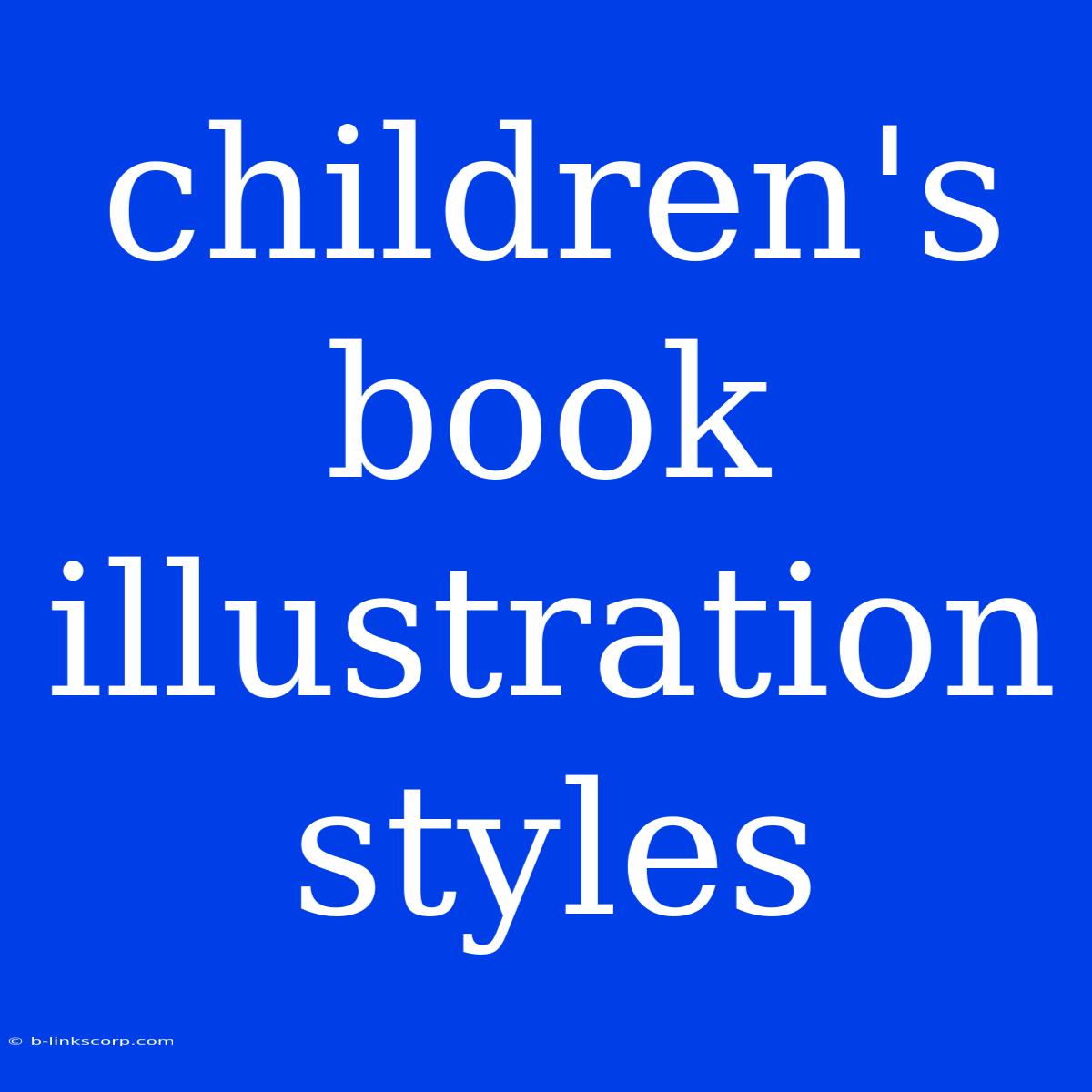A Colorful World: Exploring Children's Book Illustration Styles
Children's book illustrations are more than just pretty pictures – they're gateways to imagination, transporting young readers into fantastical worlds and captivating their hearts. From the whimsical to the realistic, there's a style for every story and every child. Let's dive into the vibrant world of children's book illustrations:
1. Watercolor: A Delicate Touch of Magic
Watercolor illustrations often evoke a sense of whimsy and wonder. Their soft edges and flowing lines create a dreamy atmosphere, perfect for stories about fairies, animals, and childhood dreams. The blending of colors creates a sense of depth and magic, allowing the illustrations to breathe and come alive on the page.
Popular examples:
- "The Very Hungry Caterpillar" by Eric Carle
- "Corduroy" by Don Freeman
2. Digital Illustration: Modern and Versatile
Digital illustration has revolutionized the children's book world, offering boundless possibilities. Artists can create intricate details, vibrant colors, and dynamic compositions using software like Photoshop and Illustrator. The style can range from realistic to cartoonish, making it adaptable to a variety of stories.
Popular examples:
- "The Day You Begin" by Jacqueline Woodson
- "The Wonderful Things You Will Be" by Emily Winfield Martin
3. Line Art: Simplicity and Storytelling
Line art illustrations emphasize the power of storytelling through simple, bold lines. They often feature minimal colors, allowing the lines to guide the reader's eye and create a sense of movement. This style works particularly well for adventure stories, historical narratives, or graphic novels.
Popular examples:
- "The Giving Tree" by Shel Silverstein
- "Where the Wild Things Are" by Maurice Sendak
4. Collage: A World of Textures and Layers
Collage illustrations offer a unique blend of textures and materials. Using paper, fabric, photographs, and other elements, artists create visually engaging and tactile compositions. This style is perfect for stories with a vintage feel, or those exploring themes of diversity and community.
Popular examples:
- "The Paper Bag Princess" by Robert Munsch
- "The Girl Who Drank the Moon" by Kelly Barnhill
5. Realistic: A Window to the Real World
Realistic illustrations depict characters and settings with a high degree of accuracy. They can be photorealistic or subtly stylized, but they aim to capture the nuances of the real world and create a sense of familiarity for the reader. This style is ideal for stories that involve nature, history, or real-life experiences.
Popular examples:
- "The Tale of Peter Rabbit" by Beatrix Potter
- "The Cat in the Hat" by Dr. Seuss
Choosing the Right Style
When choosing an illustration style for your children's book, consider the following:
- The age of your target audience: Younger children may prefer simpler styles like watercolor or line art, while older children may appreciate more complex styles like digital or collage.
- The tone and themes of your story: A whimsical story might benefit from a whimsical style, while a darker story might require a more serious style.
- The overall aesthetic you want to achieve: Think about the mood, atmosphere, and message you want to convey through your illustrations.
Ultimately, the best illustration style is the one that best complements your story and resonates with your readers.

